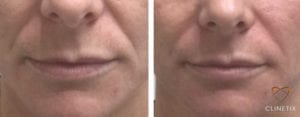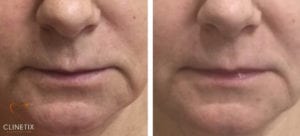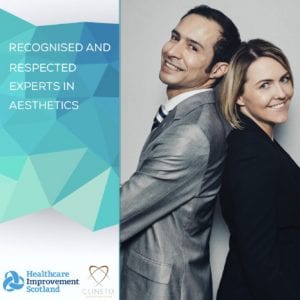On the 25th February we hosted the launch of the Aesthetic Training Academy. Based in the centre of Glasgow the Aesthetic Training Academy is a purpose designed training facility for aesthetic procedures.
Month: March 2017
9th Annual RSM Aesthetics
Last week Drs Emma & Simon Ravichandran attended the 9th Annual RSM Aesthetics at the Royal Society of Medicine in London.
Regulation of Independent Clinics in Scotland
At Clinetix we’ve always been concerned about the lack of regulation in our medical subspecialty (please note I don’t call it an industry, we are here to treat patients, not sell commodities). When we were first setting up our clinics we spent several weeks contacting various government departments to find out who we should be responsible for overseeing independent medical practices. After being referred from department to department it became shockingly clear that there was no such group or body within the Scottish Government that regulates practices such as ours.
This oversight in combination with lack of various legal provisions regarding medical practice and the de-regulation of lasers (That’s right, they used to be regulated but it was decided that it was no longer necessary!) meant that practically anybody could set up a medical practice and deliver aesthetic medical treatments. Prescription drugs are prescription drugs and you need a person qualified to prescribe to order them, but provisions for prescription distribution, originally intended for exceptional and emergency use, can be used to obtain a supply of prescription drugs for anybody to use. Dermal filler implants, one of the commonest treatments and also one of the more dangerous to perform are not even classed as prescription medicines and can be easily and legally obtained and injected without any qualification.
This has been going on for so long now that the speciality of aesthetic medicine has been trivialised to the extent that some people consider it an extension of beauty therapy, and no longer a group of medical procedures that are designed to increase a patients quality of life by improving their appearance and thus their confidence. I’m not going to go into the differences between a 2 year HND course in beauty therapy and a 5 year medical degree followed by years of postgraduate medical training because I don’t think I need to. After all, who would you want performing your medical treatment?
The purpose of the HIS regulation is to make sure every medical professional running an independent medical clinic, be they a Doctor, dentist or a Nurse, can meet the requirements set down in order to practice safely and effectively. The regulation covers a large area that covers cleanliness, sharps disposal, health and safety policies, contingency plans, emergency management protocols etc etc. The list goes on and is in fact quite large. In our opinion this is clearly a good thing, because with the best will in the world there are going to be professional clinics that fall short of the standards, quite possibly through no fault of their own. Medical School teaches us to be diagnose and treat, not run a business! HIS will bring them and even us up to speed. To an extent we have even enjoyed our regulation process because it has allowed us to review all our policies and procedures, and where needed add new ones and bring old ones up to date. There’s a sense of satisfaction and security we get from running a tight ship.
The problems with the regulation process are in that they are not going far enough. Two main issues here. Firstly they are not regulating non medically trained persons who perform medical treatments. So your beauty therapist or hairdresser who is doing a bit of dermal filler on the side will be able to continue doing so without any risk of prosecution. And the second issue is that HIS as yet does not require any evidence of qualification to perform aesthetic medical treatments, or any evidence of continuing training and professional development. Aesthetic medicine is a sub-speciality and as such requires further training in addition to the basic medical qualification but this seems to have slipped under the net for now.
So our final summary is to say that whilst HIS regulation certainly recognises a minimum standard of care you should still think about the qualifications, experience and credibility of the person who might be performing your treatment, and you should think very hard before having your medical treatment performed by a non medically qualified person
Back To Basics with Nasolabial Folds and Marionette Lines
In this article we go back to the basics to discuss Nasolabial folds and Marionette lines.



The traditional approach for this area of simply filling the skin crease and revolumising the subcutaneous tissues will invariably lead, with repeated and excessive treatments, to a flattening of the natural contour of the face. An unnatural and unaesthetic outcome.
The beauty of reflecting back on our practice now, is that now we can see where we weren’t getting it quite right, and now we can see exactly how we can do it to get the all important natural “untreated” looking aesthetic. We can do this now because of two major developments. Firstly our understanding of the anatomy of the area allows us to correct volume loss exactly where it happens. Secondly the technological developments in dermal fillers mean that we now have medical devices (dermal fillers) that can provide natural looking and feeling results.
Now when a patient requests filler in the nasolabial fold, we appreciate that it really is a fold, not a line. It should be there to an extent and completely lifting it out looks unnatural. Now we get that, we can think of the techniques and fillers we are going to use to lift it back to a natural position.
Drs Simon and Emma Ravichandran are Nationally recognised experts in aesthetic medical treatments and run training courses in medical procedures including nasolabial fold and marionette line treatments from their base at the Aesthetic Training Academy in Glasgow as well as other venues throughout the UK.


